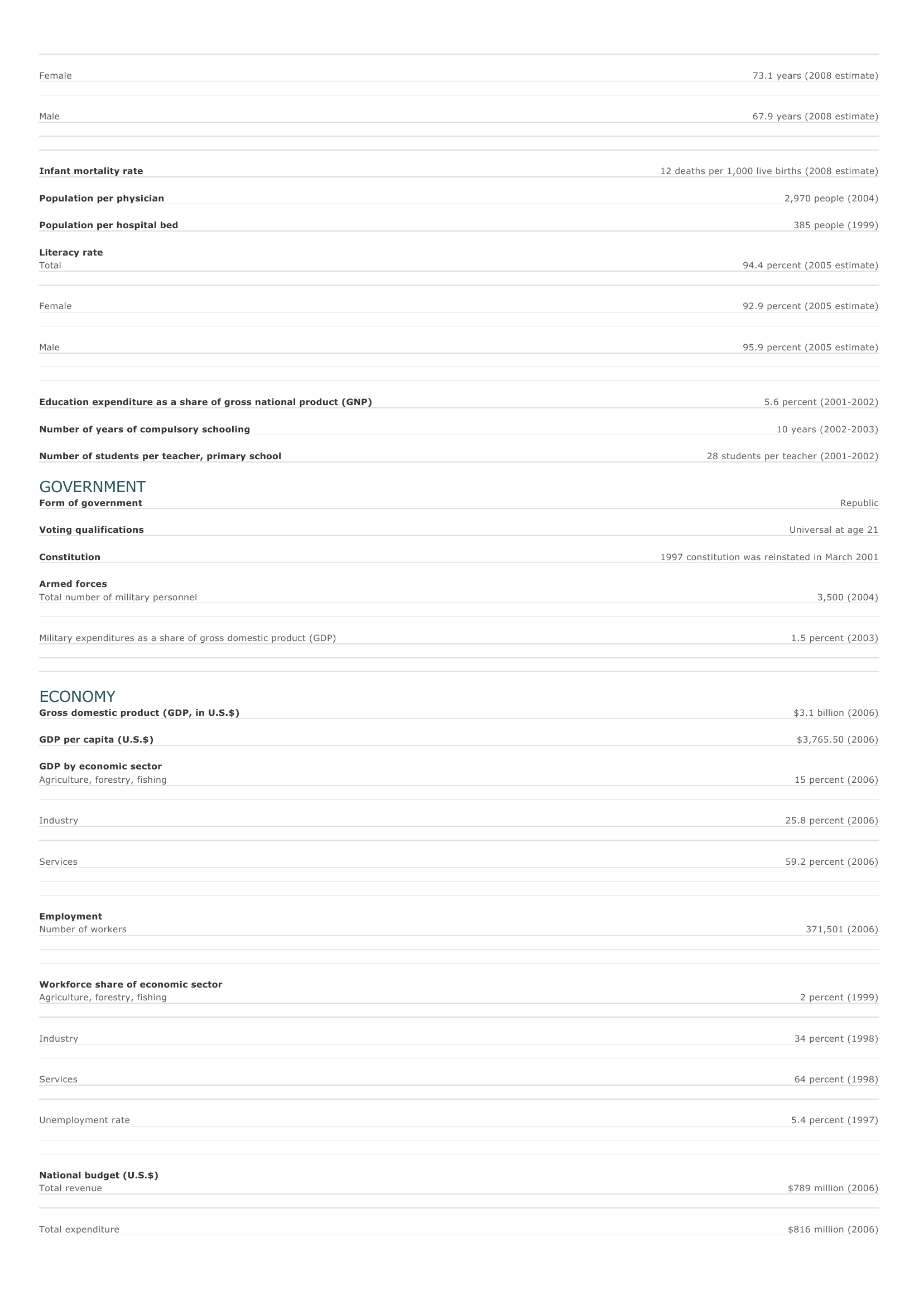Fiji Islands Facts and Figures. BASIC FACTS Official name Capital Area Republic of the Fiji Islands Suva 18,376 sq km 7,095 sq mi PEOPLE Population 931,545 (2008 estimate) Population growth Population growth rate 1.39 percent (2008 estimate) Projected population in 2025 1,153,122 (2025 estimate) Projected population in 2050 1,447,573 (2050 estimate) Population density 51 persons per sq km (2008 estimate) 132 persons per sq mi (2008 estimate) Urban/rural distribution Share urban 53 percent (2005 estimate) Share rural 47 percent (2005 estimate) Largest cities, with population Suva L autoka Nadi 75,225 (2007 estimate) 36,083 (1996) 9,170 (1996) Ethnic groups Fijian 50 percent I ndian 45 percent European, other Pacific Islander, Chinese, other 5 percent Languages English (official), Fijian, Hindustani Religious affiliations Protestant (mostly Methodist) 46 percent Hindu 33 percent Roman Catholic 10 percent Muslim 7 percent O ther 4 percent NOTE: Fijians are mainly Christian, Indians are Hindu or Muslim, and Chinese are Christian or Buddhist. HEALTH AND EDUCATION Life expectancy Total 70.4 years (2008 estimate) Female 73.1 years (2008 estimate) Male 67.9 years (2008 estimate) Infant mortality rate Population per physician Population per hospital bed 12 deaths per 1,000 live births (2008 estimate) 2,970 people (2004) 385 people (1999) Literacy rate Total 94.4 percent (2005 estimate) Female 92.9 percent (2005 estimate) Male 95.9 percent (2005 estimate) Education expenditure as a share of gross national product (GNP) Number of years of compulsory schooling Number of students per teacher, primary school 5.6 percent (2001-2002) 10 years (2002-2003) 28 students per teacher (2001-2002) GOVERNMENT Form of government Republic Voting qualifications Universal at age 21 Constitution Armed forces Total number of military personnel Military expenditures as a share of gross domestic product (GDP) 1997 constitution was reinstated in March 2001 3,500 (2004) 1.5 percent (2003) ECONOMY Gross domestic product (GDP, in U.S.$) $3.1 billion (2006) GDP per capita (U.S.$) $3,765.50 (2006) GDP by economic sector Agriculture, forestry, fishing 15 percent (2006) I ndustry 25.8 percent (2006) Services 59.2 percent (2006) Employment Number of workers Workforce share of economic sector Agriculture, forestry, fishing 371,501 (2006) 2 percent (1999) I ndustry 34 percent (1998) Services 64 percent (1998) Unemployment rate 5.4 percent (1997) National budget (U.S.$) Total revenue $789 million (2006) Total expenditure $816 million (2006) Monetary unit 1 Fiji dollar (F$), consisting of 100 cents Major trade partners for exports United States, Australia, United Kingdom, Japan, and Samoa Major trade partners for imports Australia, New Zealand, Singapore, Japan, and China ENERGY, COMMUNICATIONS, AND TRANSPORTATION Electricity production Electricity from thermal sources 20.08 percent (2003 estimate) Electricity from hydroelectric sources 79.92 percent (2003 estimate) Electricity from nuclear sources 0 percent (2003 estimate) Electricity from geothermal, solar, and wind sources 0 percent (2003 estimate) Number of radios per 1,000 people 671 (1999 estimate) Number of telephones per 1,000 people 122 (2003) Number of televisions per 1,000 people 112 (2000 estimate) Number of Internet hosts per 10,000 people 6 (2003) Daily newspaper circulation per 1,000 people 50 (1996) Number of motor vehicles per 1,000 people 74 (1997) Paved road as a share of total roads 49 percent (1999) SOURCES Basic Facts and People sections Area data are from the statistical bureaus of individual countries. Population, population growth rate, and population projections are from the United States Census Bureau, International Programs Center, International Data Base (IDB) (www.census.gov). Urban and rural population data are from the Food and Agriculture Organization (FAO) of the United Nations (UN), FAOSTAT database (www.fao.org). Largest cities population data and political divisions data are from the statistical bureaus of individual countries. Ethnic divisions and religion data are largely from the latest Central Intelligence Agency (CIA) World Factbook and from various country censuses and reports. Language data are largely from the Ethnologue, Languages of the World, Summer Institute of Linguistics International (www.sil.org). Health and Education section Life expectancy and infant mortality data are from the United States Census Bureau, International Programs Center, International database (IDB) (www.census.gov). Population per physician and population per hospital bed data are from the World Health Organization (WHO) (www.who.int). Education data are from the United Nations Educational, Scientific and Cultural Organization (UNESCO) database (www.unesco.org). Government section Government, independence, legislature, constitution, highest court, and voting qualifications data are largely from various government Web sites, the latest Europa World Yearbook, and the latest Central Intelligence Agency (CIA) World Factbook. The armed forces data is from Military Balance. Economy section Gross domestic product (GDP), GDP per capita, GDP by economic sectors, employment, and national budget data are from the World Bank database (www.worldbank.org). Monetary unit, agriculture, mining, manufacturing, exports, imports, and major trade partner information is from the statistical bureaus of individual countries, latest Europa World Yearbook, and various United Nations and International Monetary Fund (IMF) publications. Energy, Communication, and Transportation section Electricity information is from the Energy Information Administration (EIA) database (www.eia.doe.gov). Radio, telephone, television, and newspaper information is from the United Nations Educational, Scientific and Cultural Organization (UNESCO) database (www.unesco.org). Internet hosts, motor vehicles, and road data are from the World Bank database (www.worldbank.org). Note Figures may not total 100 percent due to rounding. Microsoft ® Encarta ® 2009. © 1993-2008 Microsoft Corporation. All rights reserved.






